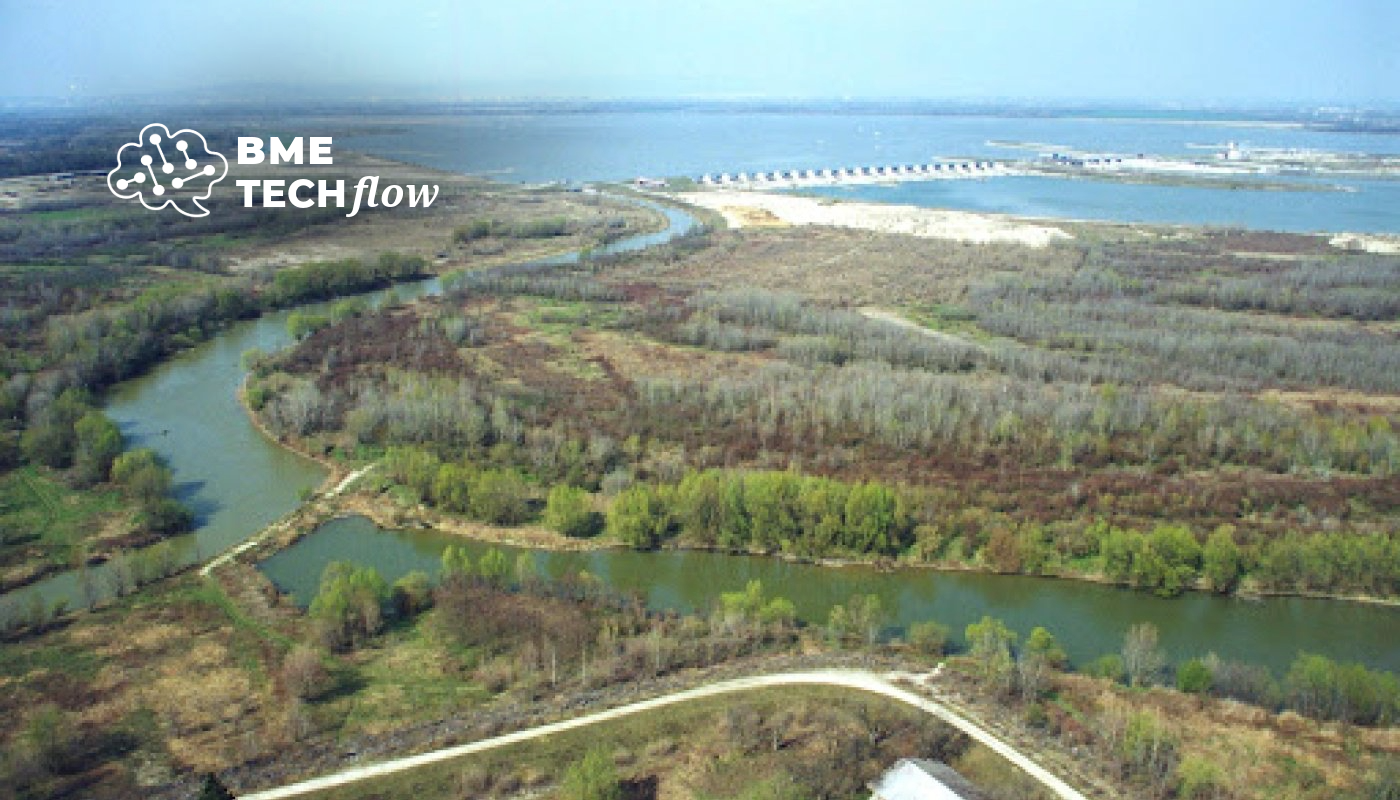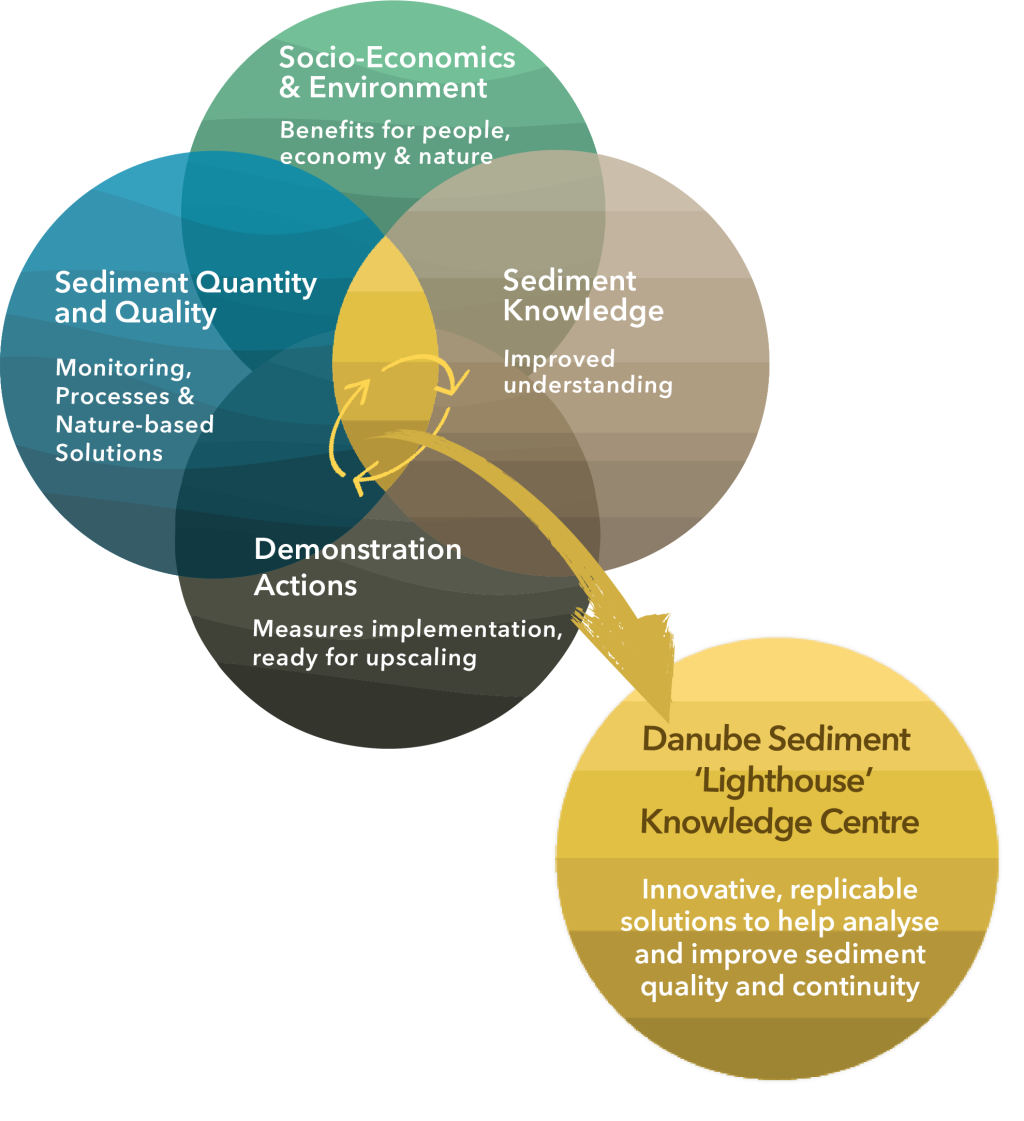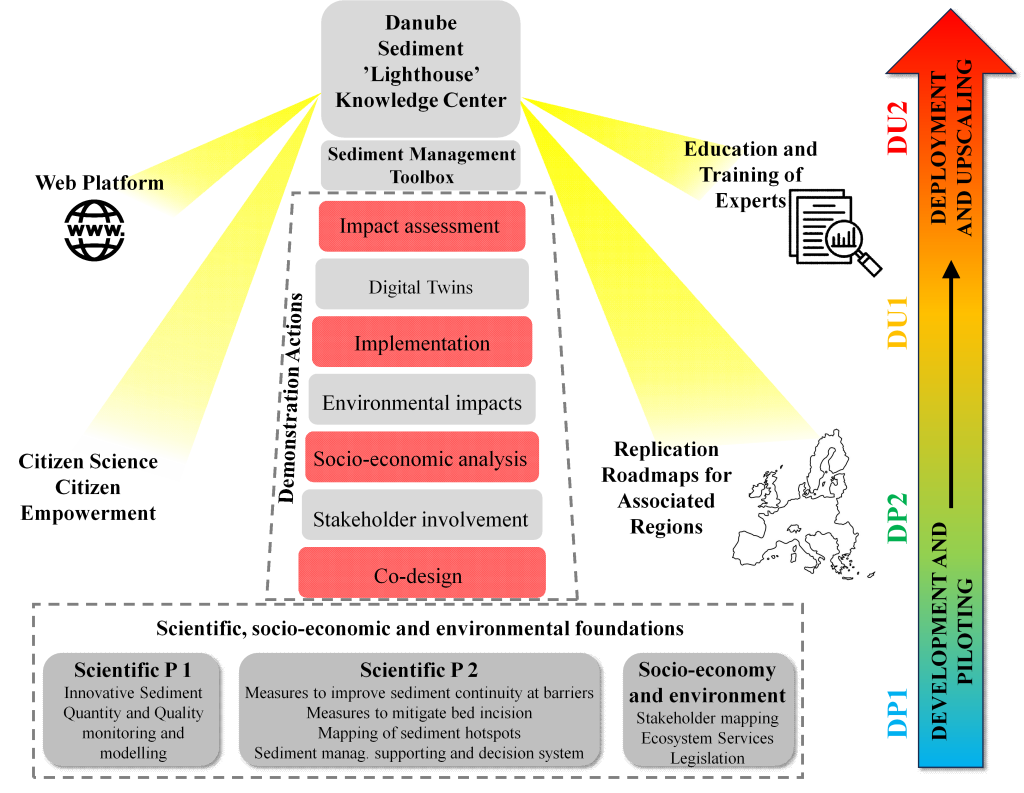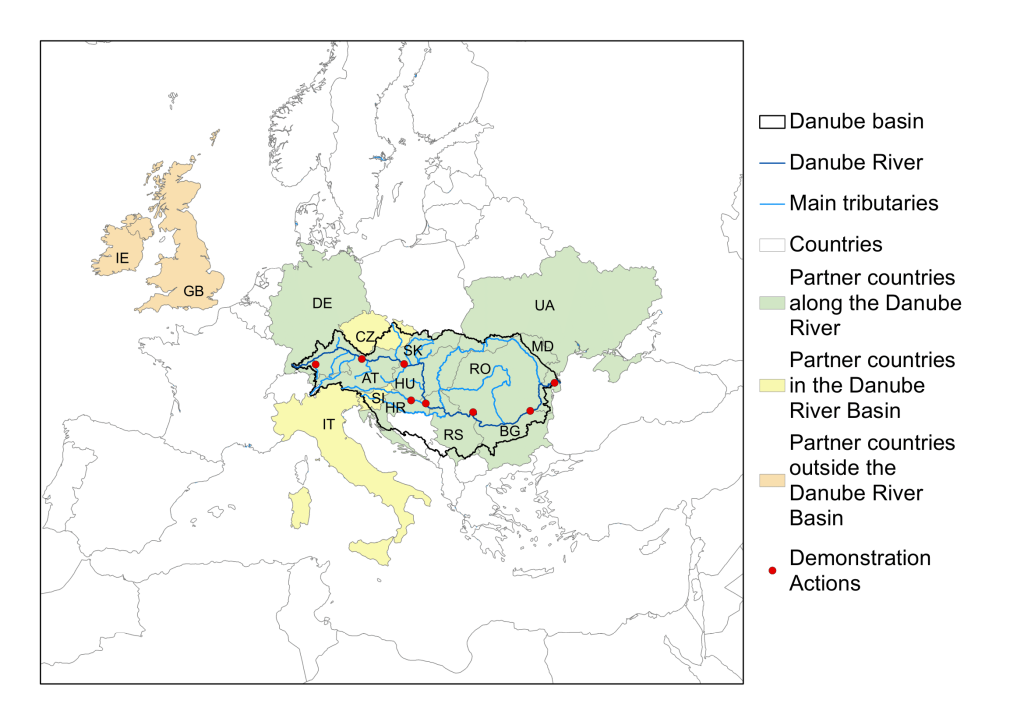News feed
BME leads an international consortium for research on the Danube river basin
2024. 10. 24.
Due to the river's disturbed sediment balance biodiversity is reduced and other problems arise - something that experts from the Faculty of Civil Engineering (ÉMK) and their foreign colleagues would help to address.
In September, the Department of Hydraulic and Water Resources Engineering (VVT) of the Faculty of Civil Engineering of BME launched the Horizon Europe iNNO SED project, which aims to restore the sediment balance of the Danube River, which has been disturbed, mainly due to human intervention.
The partners of the 5-year, €8.7 million programme include, in addition to BME, research institutions such as the Vienna University of Agricultural Sciences (BOKU), the Technical University of Munich (TUM), the Water Management Research Institute (VUVH) in Bratislava, the University of Zagreb and the University of Stirling in Scotland. The international consortium also includes water management organisations such as the General Directorate of Water Management (OVF), conservation organisations such as the World Wide Fund for Nature (WWF), private companies, shipping companies, hydropower producers and national parks.
Sándor Baranya, the head of the VVT department, summarized the background and aims of the project for bme.hu.

iNNO SED was preceded by the DanubeSediment Interreg project, also led by the VVT, which showed that in sections of the Danube dammed by water barriers, sediment naturally travelling in the river is deposited and trapped, while in the so-called free-flowing sections, such as the Hungarian part of the Danube, the riverbed is deficient in sediment and therefore becomes deeper. This disturbed sediment balance is causing a number of problems, including a decline in groundwater levels, deterioration of river permeability and navigation, increased flood risk and loss of biodiversity. The video below shows this in a clear animation:
The new project aims to develop innovative river and sediment management solutions that will help improve sediment continuity and quality within the river system, contributing to mitigating these problems. The applicability of the solutions developed will be showcased in 8 demonstration areas, one of which will address the deepening trend of the Upper Hungarian section of the Danube within the confines of a real intervention.

New measurement and modelling techniques will be developed to evaluate river management methods, and specific attention will be paid to environmental impacts and the economic aspects of intervention. The main objective is to establish the Danube Sediment "Lighthouse" Knowledge Centre and to develop a Sediment Management Toolbox. The Knowledge Centre will provide services such as the Danube Sediment Atlas, educational and awareness-raising activities, the development of a Sediment Action Plan for the Danube river basin and support to the associated regions with replication plans.

The project is part of the five Horizon Europe missions, namely "Restoring healthy oceans and waters". An important task is to involve stakeholders and citizens living in the Danube river basin in its implementation. As part of the Danube River Basin Lighthouse programme, stated mission of the project is to ensure that the solutions developed can be applied to other river systems.
Rector's Office, Department of Communications
